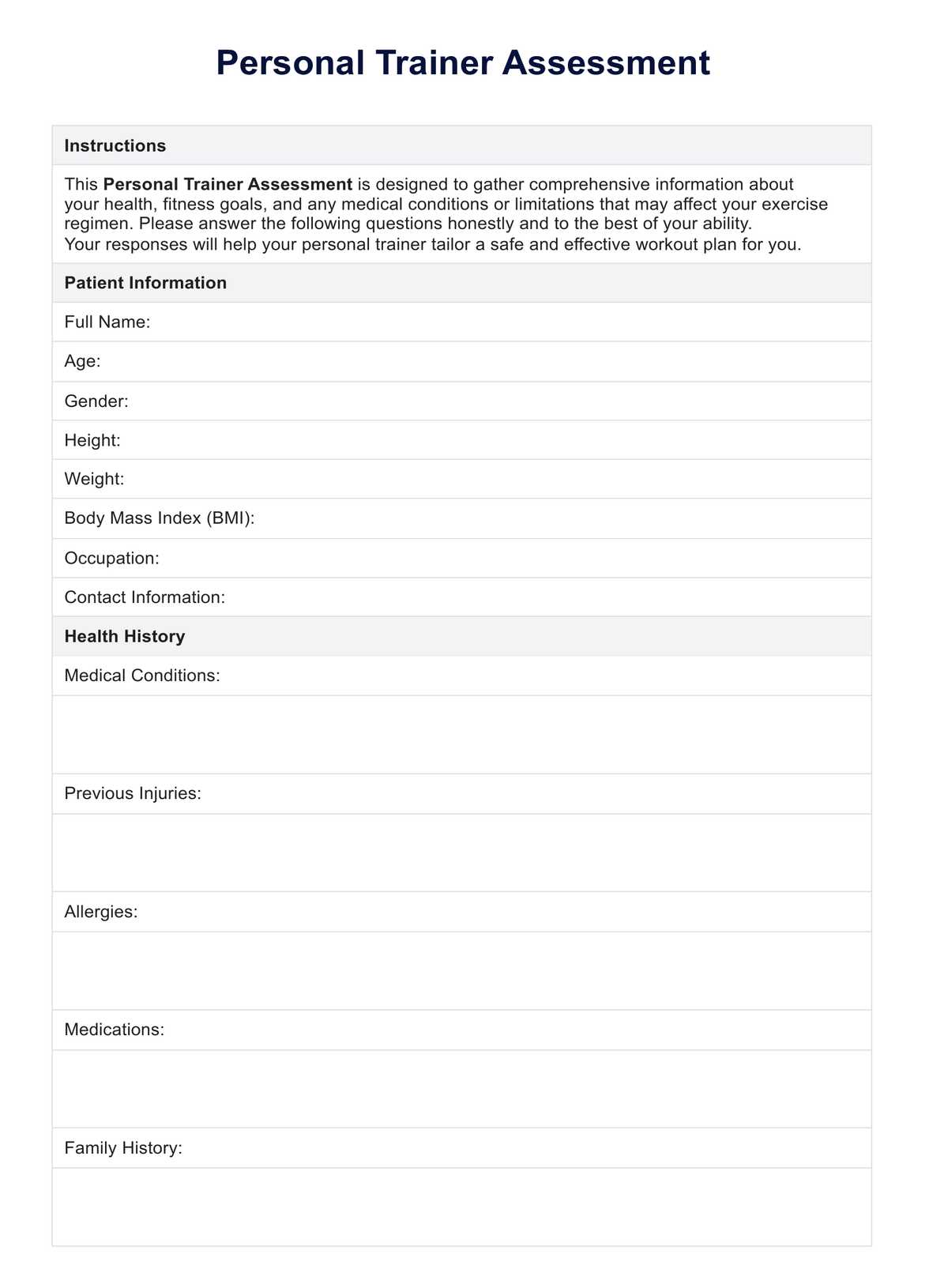Prepare for a fitness assessment by wearing comfortable workout attire and bringing any relevant medical information or previous fitness records.

Personal Trainer Assessment
Discover the Personal Trainer Assessment, a crucial instrument enabling trainers to assess fitness levels and tailor workouts accordingly. Get a PDF download now!
Use Template
Personal Trainer Assessment Template
Commonly asked questions
Individuals of all fitness levels and backgrounds benefit from personal training services, from beginners to seasoned athletes.
An assessment typically lasts between 60 to 90 minutes, depending on the complexity of the assessment and the client's individual needs.
EHR and practice management software
Get started for free
*No credit card required
Free
$0/usd
Unlimited clients
Telehealth
1GB of storage
Client portal text
Automated billing and online payments











